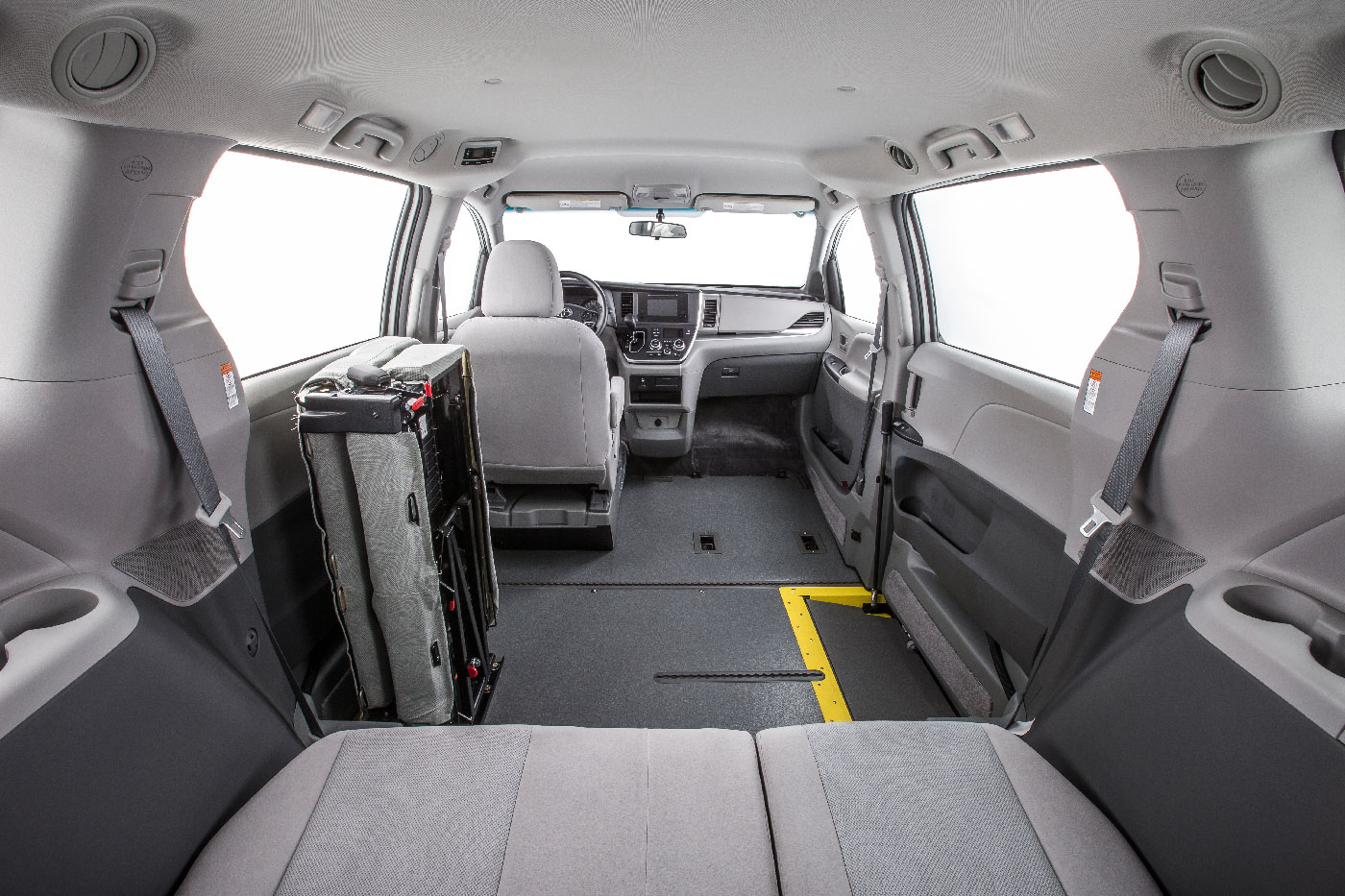What goes into making a vehicle accessible for someone with a physical disability?
That really depends on the person’s needs and each person is different. Just because two people may have the same disability doesn’t mean their needs are the same or the way they do things is the same. For this reason there are lots of different mobility options when it comes to equipment and type of vehicle.
For right now we are going to look at what does it take do a complete conversion on a minivan to make it accessible for someone in a wheelchair to get in and out while in their chair? It’s easy right? Just add a ramp to the side and viola it’s accessible right? Wrong.
- First there isn’t enough space for someone in a wheelchair to get in and out.
- The door doesn’t open wide enough
- There isn’t enough head room to accommodate the height of someone sitting in a wheelchair
- The floor isn’t level.
- When you remove all of the seats the floor isn’t a flat and stable surface that allows free motion of a wheelchair to maneuver inside.
- There isn’t a way to secure the wheelchair to the van while in operation.
- The ramp angle would be too steep for a wheelchair user to get in and out of unless the ramp was close to 10 ft long.
- If the wheelchair user is going to drive the van, how is that person going to either get into the driver seat or how would they be able to drive from their wheelchair?
- How is the wheelchair user going to be able to operate the ramp so they can get in and out on their own?
Ok so maybe it isn’t as easy as just adding a ramp… There is a lot that goes into converting a minivan.
- To address the space issue, the floor is lowered to allow for enough room for a wheelchair user to get in and out. That in itself proposes some challenges.
- For one, it is a unibody chassis. Meaning that the overall structure of the van isn’t built on top of an underlying frame that provides the support and structure of the vehicle. That means that the body and frame and body are all one part and each part plays in the structure and strength of the vehicle.
- There are typically a lot of items that need to be altered to be able to make this work. Vehicle wiring, exhaust, gas tank location, electronics, etc. These items need to be moved or changed in order to allow for that lowered floor.
- Structure has to be built and a level surface has to be built so that a wheelchair user can maneuver inside the van.
- The van is lowered all the way to the front firewall of the vehicle in some modifications to allow enough space for someone in a wheelchair the ability to be in the driver or front passenger position. Depending on a person’s ability, a seat adaptation can be added to allow them to transfer from their wheelchair into a factory seat allowing them to drive if they have the capability to transfer.
- Adding and operating the ramp
- Having a lowered floor allows the ramp to have a much less steep angle, hereby allowing for a shorter ramp to be used.
- In certain vehicles an additional feature is added to lower the side of the van even lower to help make the ramp angle even easier to get in and out of especially for manual chair users.
- Ramps are either put underneath the floor or in the doorway and are tied into the factory system. When you press the button on the remote it will trigger the door to open, once the door is open it will then trigger the ramp to come out and the vehicle to lower to the ground.
- This is done by tying into the factory system of the vehicle, adding electronics, and adding computer systems that monitor and control the operation of the ramp system.
So you see, there is a lot of research and engineering involved in making a minivan accessible. That doesn’t include the cost of crash testing and R & D involved. Here is a link to see just how one of these vans is built. https://goldenboymobility.com/vehicles/mini-vans/



